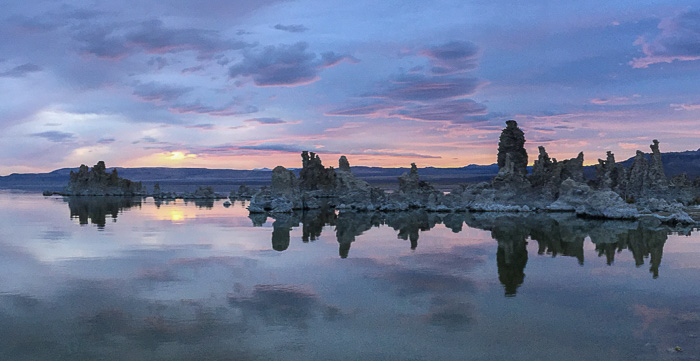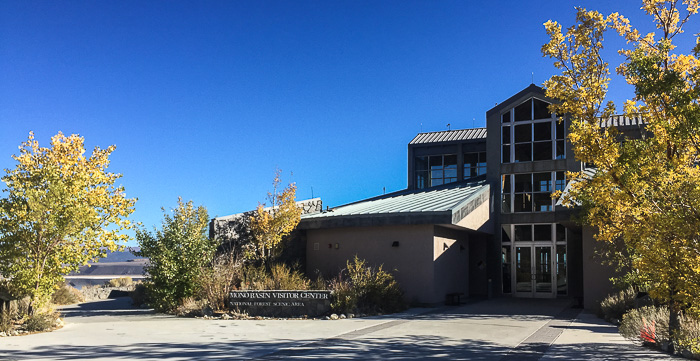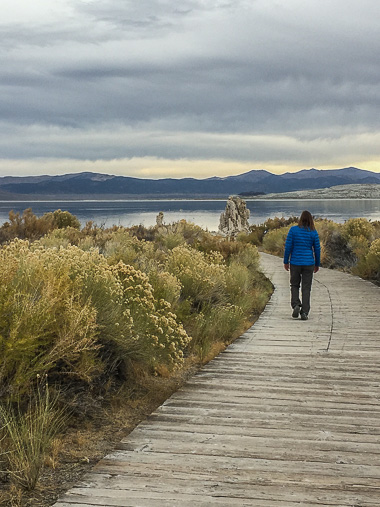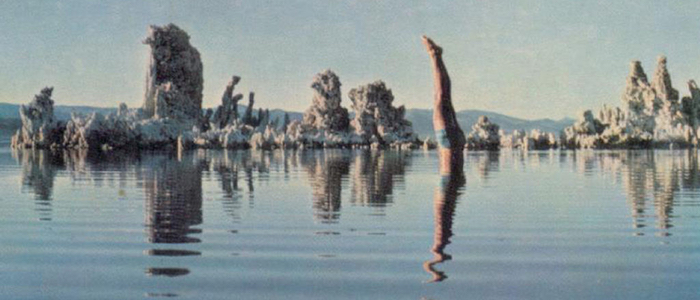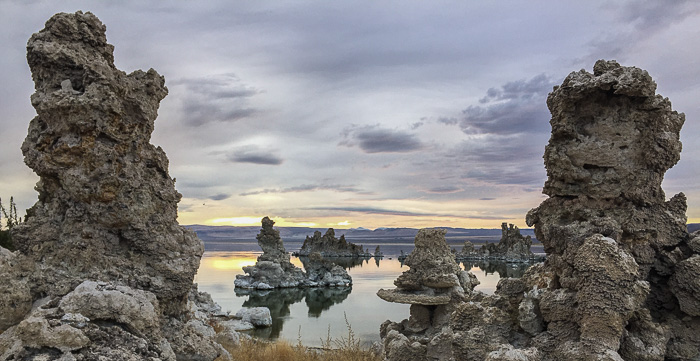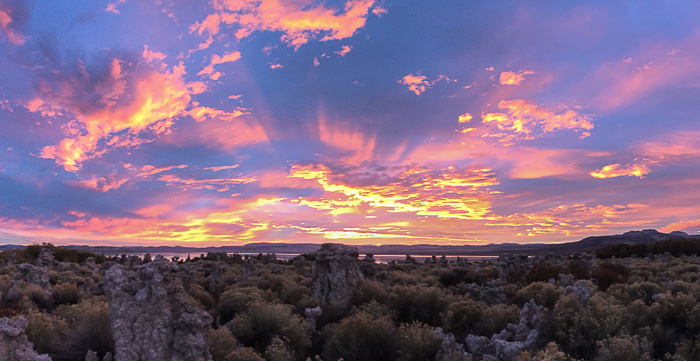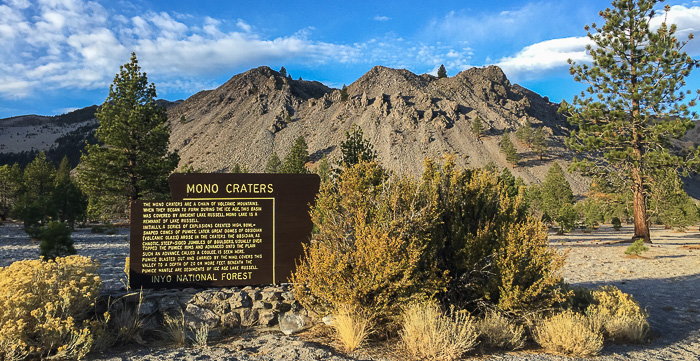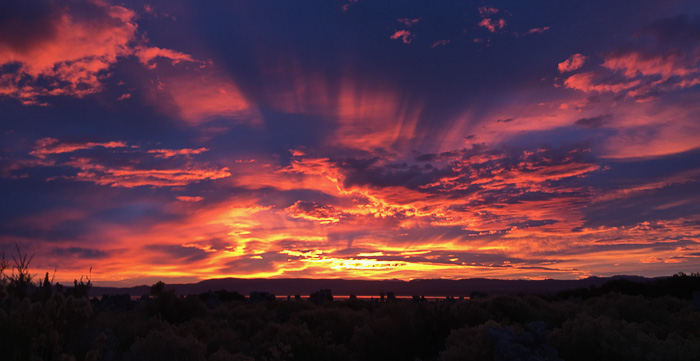Mono Lake: Wish You Were Here
Ahh, Mono Lake. Where oh where to start? First off, the name is pronounced ‘moan-oh’ (not ‘monno’ like the fatigue-inducing infectious disease). Second, when visiting, allow time for a sunrise trip to the lake, even if you’re not a morning person. Trust me, it’s worth it.
Backing up, Mono is a lake due east of the town of Lee Vining, California. If you approach the lake from the north on Route 395, you’ll be afforded sweeping views of shimmering blue. It’s pretty but not wildly so, and you might be tempted to take a few panos, then hop back on 395 and blow right past. Don’t do it! Mono Lake only reveals its treasures to those who venture close.
If you’re heading to the area, spend at least one night in Lee Vining. When I visited with a friend in October, we stayed three nights and found gobs to explore. Top recommendations for Mono Lake:
- Visit the Mono Basin Scenic Area Visitor Center
- See the Mono Lake tufas at sunrise
- Hike Panum Crater
Each bullet is discussed below. See this article for more to do in and around Lee Vining.
Mono Basin Scenic Area Visitor Center
Make this your first stop! The Mono Basin visitor center is a modern, light-filled building near the shore of Mono Lake with interpretive displays about Mono Basin and Yosemite, early inhabitants, and the unique geology and ecology of Mono Lake. I was bummed that we didn’t have time for the 20-minute film “Of Ice and Fire: A Portrait of Mono Basin” - I’m a sucker for a good overview movie. We at least spoke with a ranger (so helpful and knowledgeable) and perused the bookstore. The spotless bathrooms were a treat as well after dispersed camping the night before.
What’s so unique about Mono Lake? Its history for starters. I lifted this concise description straight from a sign near water’s edge:
In 1941 the City of Los Angeles extended its aqueduct system into the Mono Basin, diverting water from four of the six mountain streams that feed Mono Lake. Without freshwater from the streams, the lake lost more to evaporation than it gained form inflow. Mono Lake dropped nearly fifty vertical feet, shrank to half of its volume, and doubled in salinity over the next forty years.
Not cool, Los Angeles, not cool. Thanks to court rulings and the continuous efforts of the Mono Lake Committee, lake health continues to improve and its water level is gradually being raised. Other signage noted that the water in Mono Lake is 2.5 times saltier and 100 times as alkaline as the ocean, so it feels soapy and objects are exceptionally buoyant. No fish live in the lake (too alkaline) but other critters and plants have adapted. Apparently the center has some ginormous brine shrimp on display - missed those too, darn it all! Want to know more? This California State Park brochure has an area map, a list of things to do, and more on the lake’s history, ecology and geology.
Before leaving the center, ask about hiking trails, interpretive programs, and bird walks (also noted on the State Natural Reserve website) and walk the short trail to the lake. Then head to the Mono Lake Park or the South Tufa Area to see more of Mono Lake’s best feature: the tufas!
Mono Lake Tufas
Tufas! These surreal limestone formations are the reason you must get close to the water. If you’re a Pink Floyd fan, you may have already seen some: the inner sleeve of Wish You Were Here shows a man diving into Mono Lake, surrounded by tufas.
What are tufas and how do they form? Here again is a signboard explanation:
Tufa forms under Mono Lake’s waters. When freshwater springs rich in calcium bubble up through the carbonate-rich lake water, the calcium and carbonates react to form a calcium carbonate salt deposit, which is called tufa. This solid, limestone-like material continues to develop, eventually forming vertical towers with spring water percolating up through and around them.
Tufas are fantastical and Seuss-like any time of the day, but sunrise casts a special glow that can be magical. We hauled ourselves up not once but twice for sunrise over the tufas. Both were lovely, though each had a unique color palette, the first morning spectacularly bathed in vivid purple and pink, and the second washed in muted orange and steel blue. We even camped near the lake one night - what a treat to roll out of the tent and watch the lake transform.
Sunrise at the tufas is definitely a “thing”, especially with photographers. We boggled at the dozens of folks (in mid-October!) carrying serious equipment. At the South Tufa Area, a gentleman stopped us on the boardwalk, somberly stating (with a twinkle), “I’m sorry ladies, you’re not allowed past this point without a camera.” On cue, Karen and I both whipped out our iPhones - not exactly what he meant, but we passed muster.
The South Tufa Area has informational signboards, a one-mile nature trail, toilets, and picnic tables. Note that there’s a $3/adult day use fee (bring cash) and no water available. Naturalists regularly lead tours, daily in the summer and some weekends in the winter; check online for scheduled activities.
Panum Crater
If a great salt lake and limestone tufas don’t pique your interest, how about volcanoes? The Mono-Inyo Craters dot the land from Mono Lake down to Mammoth. Panum Crater, on the south side of Mono Lake, was formed about 600 years ago and is easily explored with trails that lead around the rim and up to its dome. I just did a drive-by, but have it on good authority that the top of Panum Crater offers sweeping views of Mono Basin.
The map below highlights the main stops and hikes on my 3-week road trip of the Eastern Sierras and Death Valley. Looking back, it was an unending string of awesomeness (thank to Karen who masterminded), but Mono Lake still stands out as a highlight. Highly recommend!
This article is one of many written about a 3-week road trip spent hiking and camping in the Eastern Sierras and Death Valley. To see all articles, check out this trip summary.
Bonus shot:
